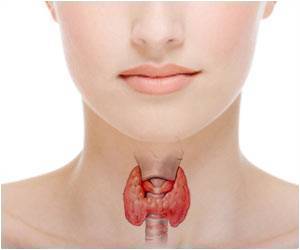Removal of lymph nodes in the neck during surgery may help prevent recurrence of thyroid cancer, reveals study.

In an international academic study published in the December issue of the journal Surgery, UCLA researchers and colleagues demonstrate that routine removal of neck lymph nodes during initial thyroid surgery for papillary cancer may lead to lower disease recurrence rates and lower levels of thyroglobulin, a thyroid tumor marker that can be an indicator of disease when elevated.
Although it is standard procedure in some cancer centers, there has been debate in the worldwide surgical community about the benefits of routinely removing neck lymph nodes, a procedure known as prophylactic central neck lymph-node dissection, or CLND.
"We found that re-operation rates due to cancer were lower in patients who had routine removal of these lymph nodes, which suggests a more thorough surgical clearance of disease," said the study's senior author, Dr. Michael Yeh, an associate professor of surgery at the David Geffen School of Medicine at UCLA. "Our findings may help add to growing evidence that this additional procedure, performed during initial thyroid surgery, may be helpful in management of papillary thyroid cancer."For the study, researchers examined data on 606 patients who received care in one of three endocrine surgical units in the U.S., England and Australia. Patients were divided into two groups: Group A patients had undergone total thyroid removal alone; Group B patients had undergone both thyroid removal and dissection of central neck lymph nodes. Patients were followed for an average of three-and-a-half years following surgery.
The standard pre-operative evaluation of all patients included a fine-needle biopsy of the primary thyroid tumor and determination of neck lymph-node disease status through physical examination and ultrasound of the neck.
The rate of disease recurrence in the entire study population was 6.9 percent. The researchers found that the need for central neck re-operation was significantly lower among patients who had undergone the routine initial central neck lymph-node dissection, compared with those who had undergone only thyroid removal (1.5 percent vs. 6.1 percent).
Advertisement
"This significant reduction in the need for further surgery in the critical central area of the neck is important, since it reduces risk to the many vital structures housed here, such as the nerves supplying the voice," said study co-author Dr. Mark Sywak of the University of Sydney in Australia.
Advertisement
Rates of temporarily low calcium levels, a common side effect, were significantly higher in Group B patients (9.7 percent), who had neck lymph nodes removed, than in Group A patients (4.1 percent) who had thyroid-removal surgery alone. The rate of long-term complications was low for both groups — about 1 percent.
The researchers said the next step may be to conduct a prospective, randomized clinical trial to further assess the impact of routinely removing central neck lymph nodes during initial surgery for papillary thyroid cancer.
Source-Eurekalert















